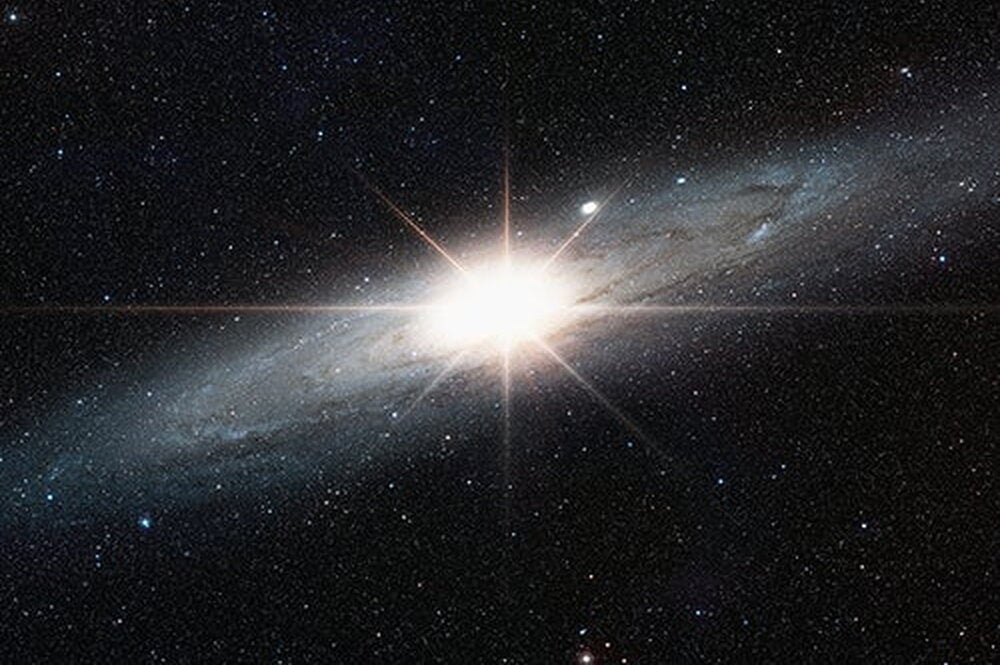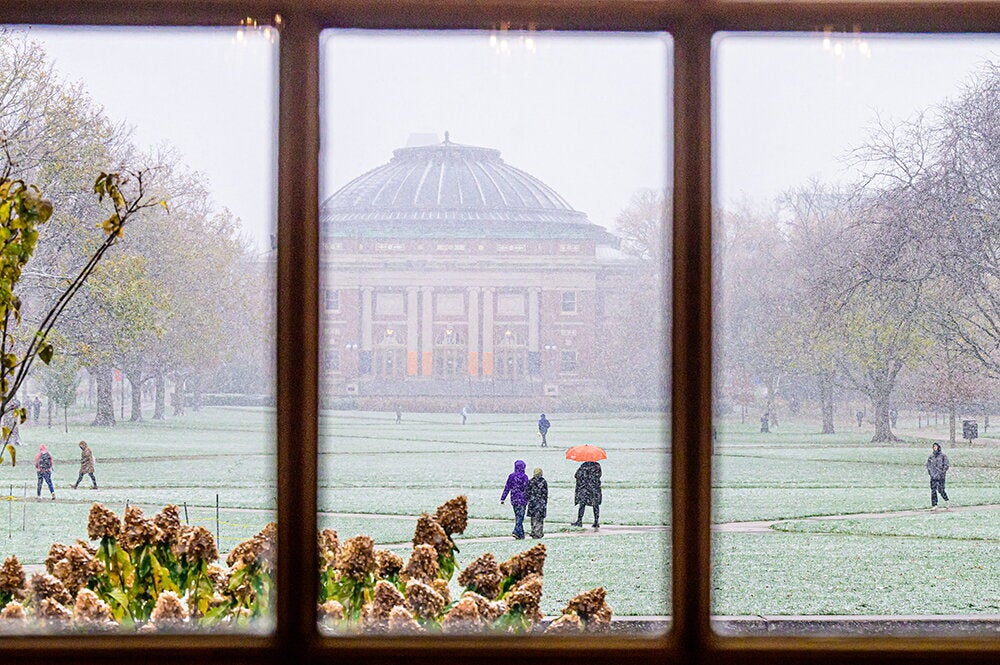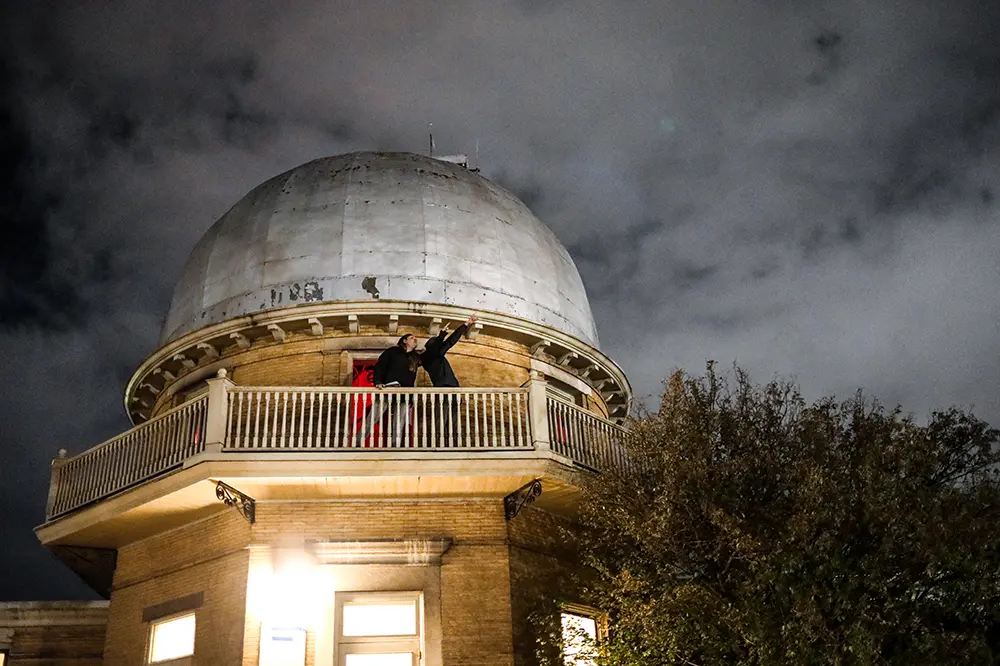
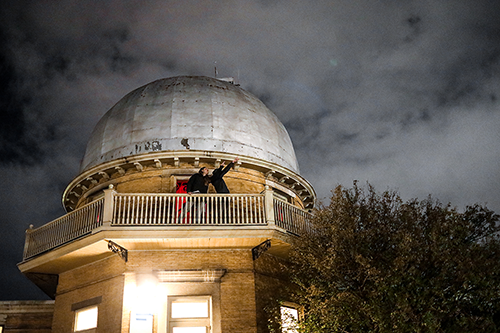
On a typical day, thousands of students, faculty, and staff crisscross campus, hustling from one class, project, meeting, and building to another. During daylight hours, crowds flow in and out of major destinations like Lincoln Hall, the Union, and the Library.
It’s only when the sun sets and the sky darkens that the Observatory becomes a hub of activity. While the building is no longer used for research, it still plays a vital role in learning and serves as a popular destination for lovers of astronomy.
One crisp night early in October, dozens of undergraduate students streamed in to perform observations for their Introduction to Astronomy course using the Observatory’s original 12-inch Brashear refracting telescope, installed in 1896, while students in an advanced lab class used more modern instruments set up behind the building. A few days earlier, The Astronomical Society held an open house, attended by about 300 people who came to view Jupiter at opposition, the point at which the planet is directly opposite the Sun from the perspective of Earth. That night Jupiter and Earth were closer than they had been in 59 years, and the skies were clear.
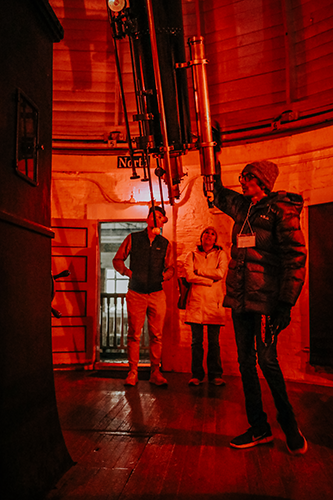
“We had a gorgeous view of the moon, Jupiter, and Saturn,” said Bryan Dunne, professor of astronomy and director of the Observatory. “The Observatory was hopping! If you happen by in the day, you might think it’s dead, but come by at night. You’ll see how active the place can be.”
Michael Svec (BS, ’88, physics), a professor of education at Furman University and active member of The Friends of the University of Illinois Observatory, credits the human scale of the Observatory and its telescope for that popularity.
“The telescope was designed for the human hand and the human eye,” he said. “Most modern telescopes are designed for the digital eye. It’s well designed for learning, because the student actually interacts with the universe through their senses, not through the computer screen.”
Preserving that experience for students and visitors means preserving the Observatory structure, no small challenge for the 127-year-old National Historic Landmark. In 2020, the University listed the Observatory as one of several campus buildings in need of roof renovations, and water infiltration also has been an issue.
It was members of the Friends of the Observatory who first flagged the Save America’s Treasures program as a potential way to fund much-needed work on the Observatory. Administered by the National Parks Service, the program provides grants to support preservation of significant properties and collections that are connected to the nation’s heritage.
LAS administrators, the Department of Astronomy, and University Facilities & Services pulled together to make a case for the Observatory as a worthy project. In fall 2022 the university was awarded a $500,000 Save America’s Treasures grant, which will be matched by an additional $500,000 from the campus deferred maintenance fund, providing a total of $1 million for critical renovations to the Observatory.
Derek Fultz, senior director of facilities and planning for the College of LAS, said the timeline and scope of the work are still being determined, but he hopes to address issues with the dome, roof, windows and doors, and foundation.
“That's one of the reasons this grant is so critical—it takes care of that unglamorous but essential building envelope work and shows a commitment from the campus and the college to preserve this great building,” Fultz said. “We want to make sure that it’s around forever.”
Preserving dark skies
Another challenge to preserving the Observatory experience: light.
“When the Observatory was built, it was on the south edge of campus, near a farm field,” Dunne explained. At the time, the buildings that now ring the Main Quad didn’t exist yet. Altgeld Hall was under construction almost a half mile from the Observatory site; Davenport Hall was planned but ground had not yet been broken. The Observatory was alone in the dark, just the way astronomers needed it to be.
But the university grew, and over the next 127 years buildings rose on all sides of the Observatory—Foellinger Hall in 1907, Smith Hall in 1917, the Undergraduate Library in 1969, and the Woese Institute for Genomic Biology in 2006. These modern upstarts diluted the darkness.
“We would not put an observatory there today if we were building one,” Dunne said.
The planned transformation of the nearby Undergraduate Library into a space for archives and collections, which began in spring 2022, raised concerns among astronomers; renderings showed the new glass entryways shining like lighthouse beacons. Fultz said the possible light intrusion from the library sparked a renewed effort by astronomers, campus facilities and landscape architecture staff, the library renovation team, and others to develop a comprehensive solution.
“Everyone involved has been very good about wanting to keep the Observatory operational,” Fultz said. “It’s definitely a team effort, which is really rewarding to see.”
Sometimes fixes are straightforward, like installing blinds on a window at Smith Memorial Hall. The entryway lights at the renovated library can be scheduled to avoid impact on the Observatory. Lights for a nearby walkway are slated to be converted from globe fixtures that send 50 percent of their light into the sky to downward-directed dark sky-compliant fixtures.
“Handling light responsibly does not mean compromising safety,” Dunne said. “Dark-sky friendly lighting illuminates the path, and none of it is going straight up into the sky. You save money by providing the light where it’s needed on the ground.”
All of this collaborative effort is designed to preserve the Observatory so Illinois students and visitors can continue to be starstruck.
“We need those special places where we can connect with the natural world around us,” said Svec.
Donor opportunities for future Observatory projects are available through the Friends of the University of Illinois Observatory Fund.
Video: Learn more about the historical importance of and groundbreaking research that has taken place at the Observatory.
{"preview_thumbnail":"/sites/default/files/styles/video_embed_wysiwyg_preview/public/video_thumbnails/OFdrgQtmE28.jpg?itok=B_N_SgZW","video_url":"https://www.youtube.com/watch?v=OFdrgQtmE28&t=63s","settings":{"responsive":1,"width":"700","height":"394","autoplay":0},"settings_summary":["Embedded Video (Responsive)."]}
Editor's note: This story first appeared in the Spring 2023 issue of The Quadrangle.
